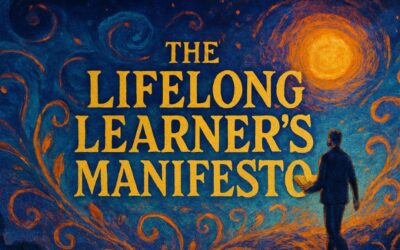- Defining the Itch: What Does Curiosity Really Mean?
- Born This Way or Made This Way? The Nature vs. Nurture Debate
- Igniting the Flame: Practical Strategies for Cultivating Curiosity
- Systemic Cultivation: Fostering Curiosity in Education and the Workplace
- Curiosity Killers: Identifying the Roadblocks
- Embracing the Lifelong Quest
- The Deep Dive
- Let’s Learn Vocabulary in Context
- Let’s Discuss
- Learn with AI
- Study Guide: The Engine of Inquiry
- Frequently Asked Questions About Curiosity
- What is curiosity, and why is it more than just being nosy?
- Are there different types of curiosity, and why is it important to understand these distinctions?
- Is curiosity something we are born with, or is it developed through our experiences?
- The text suggests curiosity is like a muscle. What does this analogy mean, and how can we strengthen our “curiosity muscle”?
- How can parents and educators nurture curiosity in children to create lifelong learners?
- What practical steps can adults take to rekindle their own sense of curiosity if it feels diminished?
- How can educational institutions and workplaces be transformed to better foster a culture of curiosity and innovation?
- What are some common “curiosity killers” that we should be aware of and actively try to overcome?
- Let’s Play & Learn
Watch a young child encounter something new. See the wide eyes, the tentative touch, the inevitable barrage of “Why?” questions that follow. It’s a portrait of pure, unadulterated curiosity – that powerful, innate engine driving exploration, learning, and our very understanding of the world. It’s the force that propelled explorers across oceans, scientists to unravel the cosmos, and artists to imagine new realities. But as we navigate the structured pathways of education, career, and adult responsibilities, that vibrant spark can sometimes seem to flicker, dim, or even extinguish under the weight of routine, fear of judgment, or the sheer onslaught of information.
This raises a fundamental question, one with profound implications for personal growth, education, and innovation: Is curiosity a fixed trait, something you’re simply born with a certain measure of? Or is it more like a muscle – something that can be trained, strengthened, and deliberately cultivated throughout our lives? Can curiosity, that most vital catalyst for learning, actually be taught or, perhaps more accurately, reawakened? Let’s delve into the nature of curiosity and explore whether this essential human quality can indeed be nurtured.
Defining the Itch: What Does Curiosity Really Mean?
Before we can talk about teaching curiosity, we need a clearer understanding of what it entails. It’s more than just being nosy or passively receiving information. At its core, curiosity is a strong desire to know or learn something, an intrinsic motivation to seek out novelty and challenge.
More Than Meets the Eye: Beyond Simple ‘Nosiness’
Curiosity isn’t just about wanting factual answers; it often involves a deeper engagement. It’s the feeling of an “information gap,” as psychologist George Loewenstein described it – a perceived difference between what we know and what we want to know, creating an intellectual itch that needs scratching. It fuels exploration, experimentation, and the willingness to venture into the unknown.
A Spectrum of Inquiry: Different Flavors of Curiosity
Researchers suggest curiosity isn’t monolithic. There are different types:
- Diversive Curiosity: This is the broad seeking of novelty and stimulation, like casually Browse different websites or flipping through TV channels. It’s often triggered by boredom but can lead to new interests.
- Specific Curiosity: This is a deeper drive to find specific information to close that knowledge gap, like meticulously researching a topic or trying to solve a complex problem.
- Empathic Curiosity: This involves genuinely wanting to understand another person’s thoughts, feelings, and perspective.
Recognizing these distinctions helps us appreciate the multifaceted nature of the drive to know.
The Pleasure Principle: Why Knowing Feels Good
Neuroscience offers clues about curiosity’s power. Engaging our curiosity activates the brain’s reward pathways, releasing dopamine – the same neurotransmitter associated with pleasure and motivation. This suggests that learning and discovery are inherently rewarding, reinforcing the drive to seek out new information and experiences. Curiosity doesn’t just lead to knowledge; it can actually feel good.
Born This Way or Made This Way? The Nature vs. Nurture Debate
So, where does this potent drive originate? Like many human traits, curiosity appears to be a product of both nature and nurture.
The Innate Spark: Evidence of Inborn Inquiry
Observing infants and young children provides compelling evidence for an innate exploratory drive. They poke, prod, taste, and endlessly question the world around them without explicit instruction. This inherent curiosity is crucial for early learning and making sense of the environment – a fundamental survival mechanism. We seem biologically predisposed to explore and understand.
The Environmental Sculptor: How Surroundings Shape Curiosity
While the initial spark may be innate, the environment plays a massive role in whether that spark ignites a flame or fizzles out.
- Supportive Environments: Homes and classrooms where questions are welcomed, exploration is encouraged (within safe limits!), mistakes are treated as learning opportunities, and resources for discovery are available tend to foster curious minds.
- Restrictive Environments: Conversely, environments that punish questions, demand rigid conformity, offer little stimulation, or instill a fear of failure can effectively stifle curiosity. If asking “Why?” is met with annoyance or dismissal often enough, a child (or adult) learns to stop asking.
- Role Models: Observing curious parents, teachers, or peers who demonstrate a love of learning and openly explore their own questions is incredibly influential.
A Malleable Mindset: Curiosity as a Skill
Perhaps the most useful perspective is that curiosity, while potentially having an innate component, is highly malleable. It behaves like a skill or a mindset that can be developed with practice or allowed to atrophy through disuse. Just as physical muscles strengthen with exercise, our “curiosity muscles” can be invigorated through conscious effort and the right conditions. This aligns with Carol Dweck’s concept of a “growth mindset” – believing abilities can be developed encourages the exploration necessary for learning.
Igniting the Flame: Practical Strategies for Cultivating Curiosity
The exciting implication is that yes, curiosity can be nurtured and developed, both in children and adults. It requires intentionality and creating the right conditions.
In Childhood: Raising Lifelong Learners
Parents and educators hold immense power in shaping a child’s relationship with curiosity:
- Welcome Questions: Treat questions not as interruptions, but as invitations to explore together. Even simple “Why?” questions deserve thoughtful engagement (or an admission that you don’t know, followed by finding out together!).
- Create Rich Environments: Provide access to books, nature, museums, diverse experiences, and open-ended toys that encourage experimentation.
- Model Curiosity: Let children see you learning, asking questions, expressing wonder, and admitting when you don’t know something. Your own curiosity is contagious.
- Embrace Mess and Mistakes: Allow for exploration that might be messy. Frame mistakes not as failures, but as valuable data points on the path to understanding.
- Focus on Inquiry: Shift from just delivering answers to facilitating the process of discovery. Encourage children to find their own answers through experimentation and research (age-appropriately, of course). Inquiry-based learning is key.
In Adulthood: Rekindling the Drive to Know
It’s never too late to fan your own flames of curiosity:
- Ask “Why?” Like a Child: Deliberately question assumptions – your own and others’. Why is something done this way? What if we tried something different?
- Embrace Novelty: Step outside your comfort zone. Read books on unfamiliar topics, listen to different music genres, try a new hobby, strike up conversations with people unlike yourself. Novelty is a powerful curiosity trigger.
- Reframe Uncertainty: Instead of viewing ambiguity or lack of knowledge as threatening, try to see it as an intriguing puzzle, an opportunity to learn.
- Be an Active Learner: Don’t just passively consume information. Engage with it – ask questions, connect it to what you already know, discuss it with others.
- Practice Mindful Observation: Pay closer attention to the details of your everyday life – the way light falls, the sounds around you, the taste of your food. Noticing the richness of the ordinary can spark wonder.
- Follow the Breadcrumbs: When something piques your interest, allow yourself to follow that thread, even if it seems unrelated to your immediate goals. See where it leads.
- Hang Out with Curious People: Enthusiasm for learning is infectious.
Systemic Cultivation: Fostering Curiosity in Education and the Workplace
Beyond individual effort, fostering curiosity requires systemic changes in our institutions.
Transforming Education: From Rote to Reason
Traditional education models often prioritize rote memorization and standardized testing, which can inadvertently stifle genuine inquiry. A paradigm shift towards curiosity-driven learning involves:
- Inquiry-Based Learning: Structuring lessons around compelling questions and student-led investigations.
- Project-Based Learning: Allowing students to delve deeply into topics that interest them through extended projects.
- Valuing Questions over Answers: Creating classroom cultures where asking questions is celebrated as much as knowing the answer.
- Psychological Safety: Ensuring students feel safe to express uncertainty, challenge ideas respectfully, and make mistakes without fear of ridicule.
The Curious Workplace: Fueling Innovation
In the modern economy, curiosity is a crucial asset. Curious employees are more adaptable, better problem-solvers, and drivers of innovation. Organizations can foster this by:
- Encouraging Questions: Leaders actively soliciting questions and creating forums for open dialogue.
- Supporting Experimentation: Allowing room for trying new approaches, even if some fail. Learning from failures is key.
- Promoting Cross-Disciplinary Interaction: Creating opportunities for people from different teams and backgrounds to share knowledge and perspectives.
- Investing in Learning: Providing resources and time for professional development driven by employee interests.
Curiosity Killers: Identifying the Roadblocks
Understanding what hinders curiosity can help us overcome these obstacles:
- Fear: Fear of looking foolish, asking a “stupid” question, making a mistake, or venturing into unfamiliar territory.
- Assumption of Knowledge: Believing you already know everything important about a topic, shutting down further inquiry.
- Time Pressure and Efficiency: Feeling too busy or pressured to deliver results quickly, leaving no room for exploration or “unproductive” questions.
- Rigid Beliefs and Dogma: Unwillingness to question established beliefs or consider alternative perspectives.
- Lack of Psychological Safety: As mentioned, environments where vulnerability is punished or questions are seen as challenges to authority.
- Information Overload: Sometimes, the sheer volume of available information can feel overwhelming, paradoxically leading to shutting down rather than seeking more.
Embracing the Lifelong Quest
So, can curiosity be taught? The answer is a resounding, multifaceted “yes.” While a foundational spark might be innate, curiosity is profoundly malleable. It is less a fixed trait and more a burgeoning capacity, a skill, and a mindset that can be actively cultivated – or tragically stifled – by our environment, our habits, and our choices.
Nurturing curiosity in ourselves and others isn’t just about accumulating more facts; it’s about fostering a fundamental orientation towards the world – one characterized by openness, wonder, engagement, and a willingness to embrace the unknown. It is the engine of intrinsic motivation, personal growth, scientific discovery, artistic creation, and societal progress. In a world demanding constant adaptation and learning, the ability to cultivate and sustain our curiosity may be one of the most vital skills we possess. It requires conscious effort, creating supportive environments, and bravely embracing the power of asking “Why?”. The quest for knowledge begins not with answers, but with the courage to nurture the question mark.
The Deep Dive
Let’s Learn Vocabulary in Context
Let’s explore some of the key vocabulary we used when talking about whether curiosity can be taught. These words pop up frequently in discussions about learning, psychology, and personal development, so getting a good handle on them is really useful. We’ll dive into about ten of them.
First off, we used the word innate. We discussed whether curiosity is an “innate” drive. Innate means inborn or natural; originating from the mind or constitution rather than from experience. If a quality is innate, you’re essentially born with it; it’s part of your fundamental nature. The argument for curiosity being innate comes from observing babies who naturally explore without being taught. It contrasts with qualities or skills that are learned or acquired through experience. You might talk about an “innate talent” for music, meaning someone seems naturally gifted, or discuss whether certain fears are “innate” or learned. “She has an innate sense of rhythm.”
Conversely, we talked a lot about how curiosity can be cultivated. To cultivate, as we’ve seen before, means to try to acquire or develop a quality, sentiment, or skill. It implies nurturing something and helping it grow over time, often through deliberate effort. This is the hopeful part of the discussion – even if curiosity might wane, we can actively work to cultivate it in ourselves, our children, or our teams. It suggests development and improvement are possible. You can cultivate patience, cultivate friendships, or cultivate an appreciation for art. “Good teachers work hard to cultivate critical thinking skills in their students.”
We also mentioned factors that can stifle curiosity. To stifle means to suppress, curb, or restrain something; it can also mean to suffocate. When an environment or attitude stifles curiosity, it prevents it from flourishing, holds it back, or even extinguishes it. Fear of judgment, rigid rules, or dismissive responses to questions can all stifle a person’s natural desire to learn and explore. You might hear about rules that “stifle creativity,” or someone feeling “stifled” in a restrictive job or relationship. “His controlling management style stifled innovation within the team.”
A key idea was that curiosity is malleable. Malleable means easily influenced, pliable, or adaptable. If something is malleable, it can be shaped or changed. Think of malleable metal like gold, which can be hammered into different shapes. Saying curiosity is malleable suggests it’s not fixed or rigid; it can be increased, decreased, or directed through experiences and intentional practices. This contrasts with the idea of it being a fixed, unchangeable trait. We can talk about “malleable opinions” that change easily, or refer to the “malleable minds” of young children, suggesting they are easily influenced. “Plastic becomes malleable when heated.”
We used the term paradigm shift when talking about education. A paradigm is a typical example or pattern of something; a model. More specifically, in intellectual contexts, it often refers to a distinct set of concepts or thought patterns, including theories, research methods, postulates, and standards for what constitutes legitimate contributions to a field. A “paradigm shift” (a term popularized by Thomas Kuhn) is a fundamental change in these basic concepts and experimental practices. Shifting education from rote memorization to inquiry-based learning represents such a fundamental change in the underlying model or approach. You might talk about a “scientific paradigm” or a “new business paradigm.” “The discovery of DNA caused a paradigm shift in biology.”
The opposite of inquiry-based learning was described using the word rote. Rote memorization refers to learning or memorization by repetition, often without attention to meaning or understanding. It’s learning something mechanically. While sometimes necessary (like learning multiplication tables), an over-reliance on rote learning can stifle curiosity because it emphasizes memorizing facts over understanding concepts or asking questions. Think about learning a poem by repeating it over and over without necessarily analyzing its meaning – that’s rote learning. “He learned the historical dates by rote for the exam.”
Curiosity was described as an intrinsic motivation. Intrinsic means belonging naturally; essential. Intrinsic motivation comes from within the individual; it’s the desire to do something because it is inherently interesting, enjoyable, or satisfying, rather than for some external reward or pressure (which would be extrinsic motivation). Curiosity drives us to learn for the sheer pleasure or interest of knowing, which is a powerful intrinsic motivator. You can talk about the “intrinsic value” of education (its inherent worth beyond job prospects) or the “intrinsic properties” of a substance. “She has an intrinsic love for helping others.”
We mentioned embracing novelty as a way to boost curiosity. Novelty is the quality of being new, original, or unusual. Our brains are often stimulated by novelty; encountering something new or different tends to capture our attention and spark our interest. Trying new experiences, learning about unfamiliar subjects, or meeting different people introduces novelty into our lives, which can trigger diversive curiosity and potentially lead to deeper specific curiosity. We might enjoy the “novelty of visiting a foreign country” or complain when the “novelty of a new gadget wears off.” “The sheer novelty of the idea attracted investors.”
Education should encourage inquiry, not just answers. Inquiry is the act of asking for information; an official investigation. In an educational context, inquiry-based learning is an approach that emphasizes the student’s role in the learning process. Students are encouraged to ask questions, investigate, explore, and discover answers themselves, rather than simply being told information. This process naturally fosters curiosity and critical thinking. You might conduct an “inquiry into the causes of the accident” or engage in “scientific inquiry.” “The course was based on principles of student inquiry.”
Finally, we described curiosity using the adjective burgeoning. Burgeoning means beginning to grow or increase rapidly; flourishing. Calling curiosity a burgeoning capacity suggests it’s something that can develop, expand, and blossom, especially when nurtured correctly. It implies potential for growth and rapid development. You might talk about a “burgeoning industry,” a “burgeoning friendship,” or a “burgeoning sense of confidence.” “The city has a burgeoning arts scene.”
So, words like innate, cultivate, stifle, malleable, paradigm, rote, intrinsic, novelty, inquiry, and burgeoning give us a precise language to discuss the complex interplay of nature, nurture, environment, and personal effort involved in the fascinating human trait of curiosity.
Let’s Discuss
Here are some questions to spark deeper reflection and conversation about curiosity:
- Your Curiosity Journey: Think about your own life. Was curiosity strongly encouraged or discouraged in your childhood environment (home, school)? How has your level or type of curiosity changed as you’ve gotten older?
- Consider: What specific experiences might have nurtured or stifled your curiosity? Do you feel more or less curious now than when you were younger? What are you most curious about today?
- Curiosity Killers in Action: The article listed several “curiosity killers” (fear, routine, overload, etc.). Which of these do you think is the most powerful or common obstacle in today’s society or in your own life? How can it be overcome?
- Consider: Is it the pressure to always have the ‘right’ answer? The sheer volume of information? The fear of looking ignorant in front of peers or colleagues? Discuss practical, personal strategies for tackling that specific obstacle.
- Education and Inquiry: How well do you think current educational systems (that you’re familiar with) do at fostering genuine inquiry versus rote learning? What specific changes could schools implement to better cultivate curiosity?
- Consider: Think about standardized testing, classroom dynamics, teacher training, curriculum design. What does a truly curiosity-driven classroom look like? How can we balance foundational knowledge with exploration?
- The Value of “Why?”: Why is asking “Why?” so fundamental to curiosity? When do we stop asking it as often, and how can we consciously reintegrate it into our thinking as adults?
- Consider: Does asking “Why?” sometimes feel challenging or disruptive in adult contexts (work, social situations)? How can we phrase questions constructively to encourage exploration rather than defensiveness? Share examples of when asking “Why?” led to an interesting discovery or insight.
- Is All Curiosity Good?: The article focuses on the positive aspects of curiosity. Are there downsides? Can curiosity be misplaced, morbid, or lead to negative consequences? How do we differentiate between healthy inquiry and potentially harmful nosiness or obsession?
- Consider: Think about privacy concerns, “doomscrolling,” chasing gossip, or scientific curiosity without ethical boundaries. Where is the line? Does the motivation behind the curiosity matter?
Learn with AI
Hi there! It’s great we’re focusing on curiosity – it truly is fundamental to so much of human progress and fulfillment. The article laid a fantastic foundation. Let’s build on that by exploring a few more nuanced dimensions that researchers and educators often consider.
One important layer is distinguishing more formally between different types of curiosity. While we touched on diversive and specific, psychologist Todd Kashdan and his colleagues propose a model with five dimensions: Joyous Exploration (driven by wonder), Deprivation Sensitivity (that itch to close an information gap), Stress Tolerance (willingness to embrace the anxiety of the unknown), Social Curiosity (interest in how others think/behave – overlapping with empathic), and Thrill Seeking (willingness to take risks to acquire new experiences). Recognizing these different facets helps us understand that “being curious” isn’t one single thing; people might be high on some dimensions and lower on others, and different strategies might nurture different types.
Another key concept often linked with curiosity is intellectual humility. This is the awareness that your own knowledge is limited and fallible. People with higher intellectual humility are often more curious because they recognize there’s much they don’t know and are more open to learning from others and revising their beliefs. Cultivating intellectual humility – being okay with uncertainty and acknowledging limitations – can actually be a powerful gateway to reigniting curiosity. It combats that “assumption of knowledge” pitfall.
Let’s also consider curiosity across the lifespan. While it seems naturally high in childhood, does it inevitably decline? Research suggests it can fluctuate. It might dip during adolescence due to social pressures or rigid schooling, but it can absolutely be maintained or even increased in adulthood and older age, especially if individuals remain engaged, open to new experiences, and maintain social connections. Lifelong learning initiatives often explicitly aim to foster this later-life curiosity.
We mentioned the neuroscience briefly with dopamine, but it’s a burgeoning field. Research is exploring how curiosity affects attention (making us focus better on things we’re curious about), memory (we remember information better if we were curious about it beforehand – the “curiosity K Mnemonic Effect”), and decision-making. It’s not just about feeling good; curiosity actively primes the brain for learning.
Finally, while we focused on fostering curiosity, it’s worth acknowledging the potential “dark side” more directly. Morbid curiosity, obsessive information-seeking that increases anxiety (like doomscrolling health symptoms), or curiosity that violates ethical boundaries (intrusive surveillance, unethical experimentation) are real phenomena. Healthy curiosity is usually balanced with empathy, ethics, and self-regulation. It’s not just about the drive to know, but also about the wisdom guiding that drive.
So, thinking about the different flavors of curiosity, the importance of intellectual humility, how it changes over a lifetime, its specific effects on learning, and acknowledging its potential downsides adds valuable depth to our understanding of this fascinating human quality.
Study Guide: The Engine of Inquiry
Key Concepts and Themes
- The Nature of Curiosity: Explore the definition of curiosity beyond simple nosiness, emphasizing its role as an intrinsic motivator for learning and seeking novelty.
- Innate vs. Learned Curiosity: Understand the debate surrounding whether curiosity is an inherent trait or a developed skill, acknowledging the influence of both nature and nurture.
- Types of Curiosity: Differentiate between diversive, specific, and empathic curiosity and recognize the nuances within the drive to know.
- Neuroscience of Curiosity: Recognize the role of dopamine and the brain’s reward pathways in making learning and discovery pleasurable.
- The Impact of Environment: Analyze how supportive and restrictive environments, as well as role models, shape the development of curiosity.
- Curiosity as a Malleable Skill: Grasp the concept of curiosity as something that can be strengthened or weakened through practice and conscious effort, aligning with a growth mindset.
- Strategies for Cultivating Curiosity: Identify practical approaches for fostering curiosity in both childhood and adulthood.
- Systemic Cultivation in Education and the Workplace: Understand how educational institutions and organizations can create environments that encourage inquiry and innovation.
- Curiosity Killers: Recognize the common obstacles that can hinder or extinguish curiosity.
- The Importance of Curiosity: Appreciate the broader significance of curiosity for personal growth, learning, innovation, and societal progress.
Quiz: Short Answer Questions
Answer each question in 2-3 complete sentences.
- According to the text, what distinguishes genuine curiosity from simply being nosy?
- Explain George Loewenstein’s concept of the “information gap” and how it relates to curiosity.
- Describe the key difference between diversive and specific curiosity, providing a brief example of each.
- How does the activation of the brain’s reward pathways contribute to the drive to be curious?
- Provide one example from the text illustrating the role of an innate exploratory drive in humans.
- Explain how a restrictive environment can negatively impact the development of a child’s curiosity.
- According to the text, what is the benefit of viewing curiosity as a malleable skill or mindset?
- Describe one practical strategy parents or educators can use to cultivate curiosity in children.
- What is one way organizations can foster a more curious and innovative workplace culture?
- Identify and briefly explain one “curiosity killer” mentioned in the text.
Quiz Answer Key
- Genuine curiosity is characterized by a strong desire to know or learn something and an intrinsic motivation to seek out novelty and challenge, going beyond the superficiality of simply wanting to know other people’s business (nosiness). It involves a deeper engagement with the subject matter.
- Loewenstein’s “information gap” describes the perceived difference between an individual’s current knowledge and the knowledge they desire to have. This gap creates an intellectual discomfort or “itch” that fuels curiosity and motivates the individual to seek out information to close it.
- Diversive curiosity involves a broad seeking of novelty and stimulation, like casually browsing the internet, often triggered by boredom. Specific curiosity, on the other hand, is a focused drive to find particular information to resolve a knowledge gap, such as researching the causes of a historical event.
- Engaging curiosity activates the brain’s reward pathways, leading to the release of dopamine, a neurotransmitter associated with pleasure and motivation. This suggests that the act of learning and discovery is inherently rewarding, which reinforces the drive to seek out new information and experiences.
- The text cites the behavior of infants and young children who poke, prod, taste, and endlessly question their surroundings without explicit instruction as evidence of an innate exploratory drive. This inherent curiosity is crucial for early learning and understanding the environment as a fundamental survival mechanism.
- A restrictive environment can stifle a child’s curiosity by punishing questions, demanding rigid conformity, offering little stimulation, or instilling a fear of failure. If a child’s “Why?” questions are consistently met with annoyance or dismissal, they learn to suppress their natural inclination to inquire.
- Viewing curiosity as a malleable skill or mindset, similar to physical muscles, suggests that it can be developed and strengthened through conscious effort and the right conditions. This aligns with a growth mindset, encouraging individuals to believe their abilities can be developed, thus fostering the exploration necessary for learning.
- Parents and educators can cultivate curiosity in children by welcoming their questions and treating them as opportunities to explore together. Even simple questions deserve thoughtful engagement or a collaborative effort to find the answers, fostering a positive association with inquiry.
- Organizations can foster a more curious and innovative workplace culture by actively soliciting questions from employees and creating forums for open dialogue. This encourages a sense of psychological safety where individuals feel comfortable expressing their uncertainty and seeking new knowledge without fear of judgment.
- Fear is a “curiosity killer” that involves the apprehension of looking foolish, asking a “stupid” question, making a mistake, or venturing into unfamiliar territory. This fear can prevent individuals from pursuing their curiosity and exploring new ideas or information.
Essay Format Questions
- Analyze the interplay between nature and nurture in the development of curiosity, drawing on specific examples from the text to support your claims.
- Discuss the different types of curiosity outlined in the text and explain why recognizing these distinctions is important for understanding and fostering inquiry.
- Evaluate the practical strategies suggested in the text for cultivating curiosity in either childhood or adulthood, arguing for the significance and potential impact of specific techniques.
- Critically examine the ways in which traditional education models can inadvertently stifle curiosity and propose how a shift towards curiosity-driven learning, as described in the text, could be more beneficial.
- Explore the benefits of fostering a curious culture in the workplace, as presented in the text, and discuss the challenges organizations might face in implementing such a shift.
Glossary of Key Terms
- Curiosity: A strong desire to know or learn something; an intrinsic motivation to seek out novelty and challenge.
- Innate: Existing from birth; inborn.
- Malleable: Capable of being shaped or influenced.
- Intrinsic Motivation: Motivation that comes from within oneself, driven by personal interest or enjoyment.
- Extrinsic Motivation: Motivation that comes from external rewards or punishments.
- Information Gap: (as described by George Loewenstein) The perceived difference between what one knows and what one wants to know, creating a drive to seek information.
- Diversive Curiosity: The broad seeking of novelty and stimulation.
- Specific Curiosity: A focused drive to find specific information to close a knowledge gap.
- Empathic Curiosity: Genuinely wanting to understand another person’s thoughts, feelings, and perspective.
- Dopamine: A neurotransmitter in the brain associated with pleasure, reward, and motivation.
- Growth Mindset: (as described by Carol Dweck) The belief that one’s abilities and intelligence can be developed through dedication and hard work.
- Rote Memorization: Learning through repetition without necessarily understanding the meaning.
- Inquiry-Based Learning: An educational approach where learning is driven by student questions and investigations.
- Project-Based Learning: An educational approach where students learn by actively engaging in real-world and personally meaningful projects.
- Psychological Safety: An environment where individuals feel comfortable taking risks, asking questions, and making mistakes without fear of negative consequences.
Frequently Asked Questions About Curiosity
What is curiosity, and why is it more than just being nosy?
Curiosity is defined as a strong desire to know or learn something, driven by an intrinsic motivation to seek out novelty and challenge. It goes beyond simple nosiness, which can be passive or even intrusive. Genuine curiosity often involves a deeper engagement with a topic, stemming from a perceived “information gap” – the difference between what we know and what we want to know. This feeling fuels exploration, experimentation, and a willingness to venture into the unknown, rather than just seeking superficial details.
Are there different types of curiosity, and why is it important to understand these distinctions?
Yes, researchers suggest different facets of curiosity exist. These include diversive curiosity (a broad seeking of novelty), specific curiosity (a focused drive to close a knowledge gap), and empathic curiosity (a genuine desire to understand others). Recognizing these distinctions is important because it highlights the multifaceted nature of our drive to know. It allows us to appreciate that curiosity isn’t a single entity and can be triggered and expressed in various ways, requiring different approaches for its cultivation.
Is curiosity something we are born with, or is it developed through our experiences?
Curiosity appears to be a product of both nature and nurture. We see evidence of an innate exploratory drive in infants and young children who naturally investigate their surroundings and ask endless questions. This inherent curiosity is crucial for early learning. However, the environment plays a significant role in either fostering or stifling this initial spark. Supportive environments that welcome questions, encourage exploration, and treat mistakes as learning opportunities tend to cultivate curious minds, while restrictive environments can diminish it.
The text suggests curiosity is like a muscle. What does this analogy mean, and how can we strengthen our “curiosity muscle”?
The analogy of curiosity as a muscle emphasizes its malleable nature. Like a muscle that strengthens with use and atrophies with disuse, our capacity for curiosity can be developed through conscious effort and the right conditions. We can strengthen our curiosity by intentionally asking “why?”, embracing novelty, reframing uncertainty as an opportunity to learn, actively engaging with information, practicing mindful observation, following our interests, and surrounding ourselves with other curious individuals.
How can parents and educators nurture curiosity in children to create lifelong learners?
Parents and educators can foster curiosity in children by welcoming their questions and treating them as opportunities for joint exploration. Creating rich environments with access to diverse materials and experiences, modeling curiosity through their own learning, embracing messes and mistakes as part of the learning process, and shifting the focus from simply delivering answers to facilitating inquiry-based learning are crucial strategies. Encouraging children to find their own answers through experimentation and research is key to developing their natural curiosity.
What practical steps can adults take to rekindle their own sense of curiosity if it feels diminished?
Adults can rekindle their curiosity by consciously adopting childlike questioning, deliberately seeking out new experiences and information, and viewing uncertainty as intriguing rather than threatening. Actively engaging with learning, paying attention to the details of everyday life, pursuing personal interests, and connecting with curious individuals can also reignite the drive to know. It’s about making a conscious effort to step outside of routine and actively seek new perspectives.
How can educational institutions and workplaces be transformed to better foster a culture of curiosity and innovation?
Educational institutions can shift from rote memorization to inquiry-based and project-based learning, valuing questions as much as answers and creating psychologically safe environments where students feel comfortable expressing uncertainty. Workplaces can encourage questions from all levels, support experimentation (even with the possibility of failure), promote cross-disciplinary interaction, and invest in learning opportunities driven by employee interests. The key is to create systems that actively encourage exploration and a mindset of continuous learning.
What are some common “curiosity killers” that we should be aware of and actively try to overcome?
Several factors can hinder curiosity, including the fear of looking foolish or making mistakes, the assumption that one already knows enough, time pressure and the demand for immediate efficiency, rigid beliefs and a resistance to questioning them, a lack of psychological safety in environments, and even information overload which can feel overwhelming. Recognizing these roadblocks is the first step towards actively working to overcome them by cultivating a mindset of openness, embracing vulnerability, valuing exploration over immediate results, and managing information intake effectively.










0 Comments